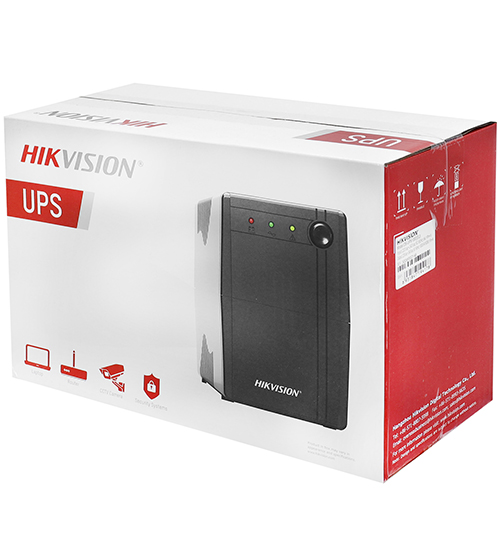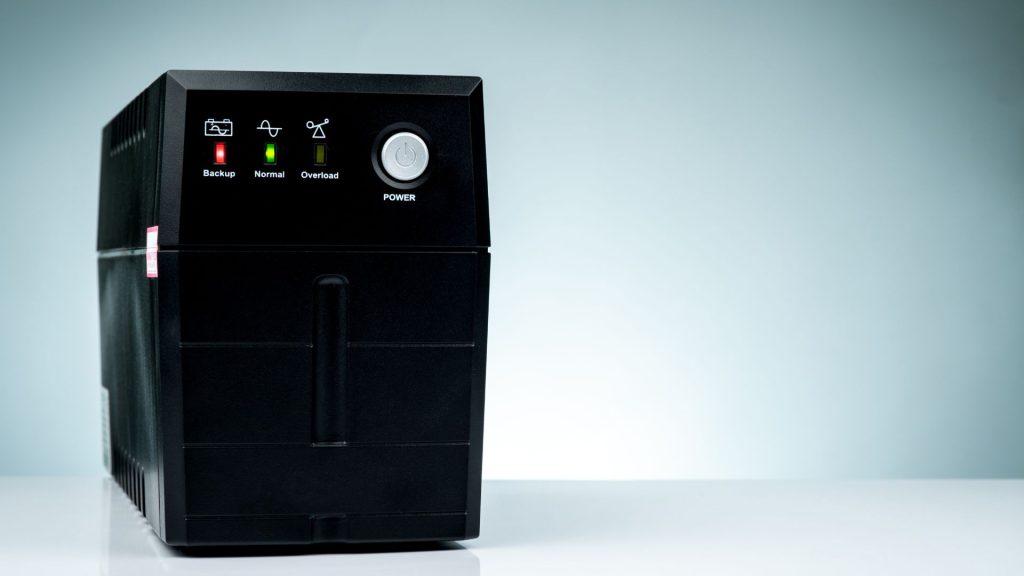Key Takeaways
| Topic | Summary |
|---|---|
| Understanding the Need for a UPS | Power outages are more common than you think and can have serious consequences for your home office setup, such as data loss, equipment damage, and costly downtime. Protecting your sensitive devices with a UPS is crucial. |
| Choosing the Right UPS | Consider the power requirements of your equipment, desired runtime during outages, and any future expansion plans when selecting a UPS. Different types (standby, line-interactive, online double-conversion) cater to various needs. |
| Installation and Setup Considerations | Proper installation and setup are essential for optimal UPS performance. Consider space requirements, noise levels, energy efficiency, and professional installation for complex systems. |
| Cost Considerations | Evaluate the total cost of ownership, including purchase, installation, maintenance, and battery replacements. Energy-efficient models can save on long-term costs. |
| Benefits of a UPS System | A UPS provides protection from power outages, voltage fluctuations, and surges, ensuring business continuity, data protection, and increased productivity by reducing downtime. |
| Real-Life Examples and Success Stories | Individuals and businesses have experienced firsthand the positive impact of implementing a UPS system, including increased productivity, peace of mind, and data protection. |
| Environmental Considerations | Consider factors like heat generation and noise levels when selecting a UPS to ensure optimal performance and lifespan. |
| Warranty and Support | Look for a comprehensive warranty and reliable technical support to protect your investment and quickly resolve any issues. |
| Maintenance and Repair | Regular maintenance, including battery replacements and cleaning, is crucial for long-term reliability. Work with qualified technicians for repairs. |

| The Hikvision 600VA/360W Line-interactive UPS DS-UPS600 offers reliable power protection for home office setups with multiple devices, safeguarding against power outages and voltage fluctuations. Buy Now |
In today’s digital age, where remote work and home-based businesses are increasingly prevalent, having a reliable and efficient UPS power supply is crucial for maintaining productivity and minimizing disruptions. Whether you’re a freelancer, entrepreneur, or remote employee, your home office setup is the backbone of your professional endeavors. However, unexpected power outages and fluctuations can pose a significant threat to your sensitive equipment, potentially leading to data loss, equipment damage, and costly downtime.
Understanding the Need for a UPS
Power outages are more common than you might think. According to the U.S. Energy Information Administration (EIA), there were approximately 3.5 billion power outages in the United States in 2020, with an average duration of 1.5 hours per outage. While a brief power interruption may seem insignificant, it can have serious consequences for your home office setup.
Computers, printers, routers, and other essential devices are sensitive to power fluctuations and can be damaged by sudden outages or surges. A study by the University of California, Berkeley found that 70% of businesses that experience a power outage lose data, and 50% of those businesses never recover from the loss[. Imagine the impact on your productivity and potential revenue if you were to lose critical data or have your equipment malfunction due to a power issue.
Choosing the Right UPS for Your Home Office
An Uninterruptible Power Supply (UPS) system is designed to provide backup power to your devices during outages, allowing you to save your work and shut down properly. There are several types of UPS systems available, each suited for different applications and power requirements:
- Standby UPS: Also known as an offline UPS, this type is suitable for basic home office setups with a single computer and minimal peripherals. It switches to battery power during outages but does not offer protection against voltage fluctuations or surges.
- Line-interactive UPS: This type of UPS offers protection against both power outages and voltage fluctuations, making it a more robust choice for home offices with multiple devices or sensitive equipment.
- Online Double-Conversion UPS: Considered the most advanced and reliable type, an online double-conversion UPS provides continuous power conditioning and voltage regulation, ensuring a consistent and clean power supply for mission-critical applications or home offices with servers or high-end workstations.
When selecting a UPS for your home office, consider the power requirements of your equipment, desired runtime during outages, and any future expansion plans. It’s also essential to choose a reputable brand with a proven track record and comprehensive support and warranty options.
One product that stands out is the Hikvision 600VA/360W Line-interactive UPS DS-UPS600, which offers reliable power protection for home office setups with multiple devices. Its line-interactive technology safeguards against power outages and voltage fluctuations, ensuring a stable and consistent power supply for your equipment.

Installation and Setup Considerations
Proper installation and setup are crucial for ensuring that your UPS system operates optimally and provides the desired level of protection. Consider the following factors:
- Space Requirements: Ensure that you have adequate space to accommodate the UPS unit, taking into account ventilation and access for maintenance.
- Noise Levels: Some UPS systems can generate noise during operation, which may be disruptive in a home office environment. Look for units with low noise levels or consider placing the UPS in a separate room or enclosure.
- Energy Efficiency: More energy-efficient UPS systems can help reduce your overall energy consumption and operating costs, making them a more environmentally friendly and cost-effective choice.
- Professional Installation: While some UPS systems are designed for easy DIY installation, it may be beneficial to have a professional handle the setup, especially for larger or more complex systems. This ensures proper configuration and maximizes the system’s performance and lifespan.
Cost Considerations
When evaluating the investment in a UPS system for your home office, it’s essential to consider the total cost of ownership (TCO). While the upfront purchase cost is a factor, you should also account for installation costs, maintenance expenses, and eventual battery replacements.
Energy efficiency is another crucial aspect that can impact the long-term costs associated with a UPS system. More efficient units consume less power during operation, leading to lower energy bills and a reduced environmental footprint.
Additionally, it’s essential to consider the scalability and flexibility of the UPS system you choose. As your home office grows and your power needs increase, you’ll want a solution that can adapt to your changing requirements without the need for a complete replacement.
Benefits of a UPS System for Your Home Office
Investing in a reliable UPS system for your home office can provide numerous benefits, ensuring business continuity, protecting your investment, and increasing productivity.
Protection from Power Outages
The primary function of a UPS is to provide backup power during outages, ensuring that your critical equipment remains operational. This allows you to save your work, safely shut down your devices, and avoid data loss or corruption. With a UPS in place, you can continue working uninterrupted, meeting deadlines, and maintaining productivity even during extended power outages.
Protection from Voltage Fluctuations
Power fluctuations, such as voltage spikes or dips, can be just as damaging to your equipment as complete outages. A UPS system, especially a line-interactive or online double-conversion model, can regulate the voltage and provide a consistent power supply, protecting your devices from these potentially harmful fluctuations.
Protection from Power Surges and Spikes
Power surges and spikes can occur due to lightning strikes, electrical grid issues, or even the cycling of large appliances in your home. These sudden increases in voltage can cause irreparable damage to sensitive electronic components. A UPS system with built-in surge protection can safeguard your equipment from these destructive events, preventing costly repairs or replacements.
Reduced Downtime and Increased Productivity
In a study by the Ponemon Institute, the average cost of downtime for a small business is around $5,600 per hour, while for a large enterprise, it can be as high as $72,000 per hour. By implementing a UPS system in your home office, you can significantly reduce the risk of downtime, ensuring seamless operations and maximizing your productivity.
According to a study by the American Productivity and Quality Center, power outages can reduce employee productivity by up to 30%. With a UPS in place, you can maintain your workflow without disruptions, meeting deadlines, and delivering high-quality work to your clients or employer.

Real-Life Examples and Success Stories
The benefits of implementing a UPS system in a home office setup are not just theoretical – countless individuals and businesses have experienced firsthand the positive impact of this investment.
One such example is Sarah, a freelance graphic designer based in New York City. After losing several hours of work and missing a critical deadline due to an unexpected power outage, she realized the importance of having a reliable backup power solution. Sarah invested in a line-interactive UPS system and hasn’t experienced any data loss or downtime since.
Reliability and consistency are paramount in my line of work, The online double-conversion UPS has provided me with a clean and stable power supply, ensuring that my equipment operates at peak performance without any hiccups or disruptions. -Mark-.The UPS has been a game-changer for my home office, I no longer have to worry about power outages disrupting my workflow or causing me to miss deadlines. It has given me peace of mind and allowed me to focus on delivering high-quality work to my clients. -Sarah-
Another success story comes from Mark, a remote software developer in San Francisco. As part of a distributed team working on mission-critical applications, Mark’s home office setup includes a powerful workstation and multiple monitors. After experiencing several power-related issues that caused data corruption and system crashes, he invested in an online double-conversion UPS system.
These real-life examples highlight the tangible benefits of implementing a UPS system in a home office environment, from increased productivity and peace of mind to data protection and equipment longevity.
Environmental Considerations
When selecting a UPS system for your home office, it’s essential to consider environmental factors that can impact its performance and lifespan. One key consideration is heat generation. UPS units can produce significant heat during operation, especially during extended periods of use or when running on battery power.
Proper ventilation and airflow are crucial to prevent overheating, which can lead to premature battery degradation or even system failure. It’s recommended to install the UPS in a well-ventilated area and avoid enclosures or confined spaces that may restrict airflow.
Noise levels are another environmental factor to consider when choosing a UPS system for your home office. Some UPS units can generate noticeable levels of noise during operation, particularly when running on battery power or when the fans are working to dissipate heat.
If your home office is in a quiet environment or shared space, excessive noise from a UPS can be disruptive and impact your productivity. Look for UPS models that are designed to operate quietly, or consider placing the unit in a separate room or enclosure to minimize noise disturbance.
Warranty and Support
When investing in a UPS system for your home office, it’s essential to consider the manufacturer’s warranty and support offerings. A comprehensive warranty can provide peace of mind, knowing that your investment is protected against defects or premature failures.
Additionally, reliable technical support and access to repair services can be invaluable in case you encounter any issues with your UPS. Look for manufacturers that offer dedicated support channels, such as hotlines, email support, or online resources, to ensure you can quickly resolve any problems and minimize downtime.
Maintenance and Repair
Regular maintenance is crucial to ensure the long-term reliability and optimal performance of your UPS system. This includes periodic battery replacements, as UPS batteries have a limited lifespan and their capacity can degrade over time.
Most manufacturers recommend replacing the batteries every 3 to 5 years, depending on usage patterns and environmental conditions. Neglecting battery replacements can leave you vulnerable to power outages and potentially cause permanent damage to your equipment.
In addition to battery replacements, regular cleaning and inspection of the UPS unit can help identify potential issues before they escalate. This may involve checking ventilation ports for obstructions, inspecting cables and connections, and monitoring system logs or indicators for any warning signs.
If you encounter any issues with your UPS system that require repair, it’s essential to work with qualified technicians or authorized service providers. Attempting repairs yourself can be risky and may void your warranty or cause further damage.
Recommended Product: Hikvision 600VA/360W Line-interactive UPS DS-UPS600
The Hikvision 600VA/360W Line-interactive UPS DS-UPS600 is a reliable and feature-rich solution designed to protect your home office setup from power outages and fluctuations. With a capacity of 600VA/360W, it is well-suited for setups with multiple devices, such as a desktop computer, monitor, printer, router, and other peripherals. This line-interactive UPS continuously monitors incoming power and automatically switches to battery mode during outages or voltage deviations, ensuring a stable and consistent power supply for your sensitive equipment.
One of the standout features of the DS-UPS600 is its intelligent battery management system, which optimizes battery performance and lifespan by monitoring and regulating charging and discharging cycles. It also offers robust surge protection, safeguarding your devices from damaging voltage spikes and surges. Additionally, the user-friendly design includes a clear LCD display for real-time monitoring, USB and RS-232 communication ports for integration with software solutions, and a compact form factor for seamless workspace integration.
Conclusion
In the dynamic landscape of remote work and home-based businesses, having a reliable and efficient UPS system is no longer a luxury – it’s a necessity. Power outages and fluctuations can strike at any moment, putting your productivity, data integrity, and equipment at risk.
By investing in a high-quality UPS system tailored to your home office setup, you can safeguard your operations against these disruptions, ensuring business continuity, data protection, and peace of mind. Whether you’re a freelancer, entrepreneur, or remote employee, a UPS is an essential component of a robust and resilient home office infrastructure.
Remember, the key to maximizing the benefits of a UPS system lies in selecting the right model for your specific needs, adhering to proper installation and maintenance practices, and considering factors like energy efficiency, scalability, and environmental compatibility.
Protect your investment, minimize downtime, and maintain your competitive edge by integrating a reliable UPS system into your home office setup today. Embrace the power of uninterrupted productivity and unlock your full potential in the dynamic world of remote work.
Frequently Asked Questions
What is the difference between a UPS and a surge protector?
While both devices offer protection against power-related issues, a UPS (Uninterruptible Power Supply) and a surge protector serve different purposes. A surge protector is designed to safeguard your equipment from voltage spikes or surges caused by lightning strikes or electrical grid disturbances. However, it does not provide backup power during outages.
On the other hand, a UPS system not only offers surge protection but also provides temporary battery backup power, allowing you to continue working or safely shut down your devices during power outages.
How long can a UPS system provide backup power?
The runtime of a UPS system, or the amount of time it can provide backup power, depends on several factors, including the battery capacity, the power requirements of your connected equipment, and the load level. Typically, a UPS for a home office setup can provide backup power ranging from a few minutes to several hours, depending on the model and configuration.
It’s essential to select a UPS with a runtime that aligns with your specific needs and allows sufficient time to save your work and shut down properly during an outage.
How often should I replace the batteries in my UPS system?
UPS batteries have a limited lifespan and their capacity can degrade over time, even if the UPS is not in use. Most manufacturers recommend replacing the batteries every 3 to 5 years, depending on usage patterns and environmental conditions.
Neglecting battery replacements can leave you vulnerable to power outages and potentially cause permanent damage to your equipment. It’s crucial to follow the manufacturer’s recommendations and replace the batteries as needed to ensure reliable backup power protection.
Can a UPS system protect against power surges?
Yes, most modern UPS systems include built-in surge protection capabilities to safeguard your equipment from voltage spikes or surges caused by lightning strikes, electrical grid disturbances, or other power-related events.
However, it’s important to note that not all UPS models offer the same level of surge protection. Higher-end units, such as online double-conversion UPS systems, typically provide more advanced and robust surge protection compared to entry-level or standby UPS models.
How do I determine the right UPS system for my home office setup?
Choosing the right UPS system for your home office involves considering several factors, including:
- Power requirements: Determine the total power consumption of your connected equipment, including computers, monitors, printers, routers, and any other devices you need to protect.
- Runtime needs: Assess how much backup time you require during power outages to safely save your work and shut down your equipment.
- Future expansion: Consider any potential growth or changes in your home office setup that may increase your power needs over time.
- Environmental factors: Evaluate factors like available space, ventilation, and noise levels to ensure the UPS system is compatible with your home office environment.



